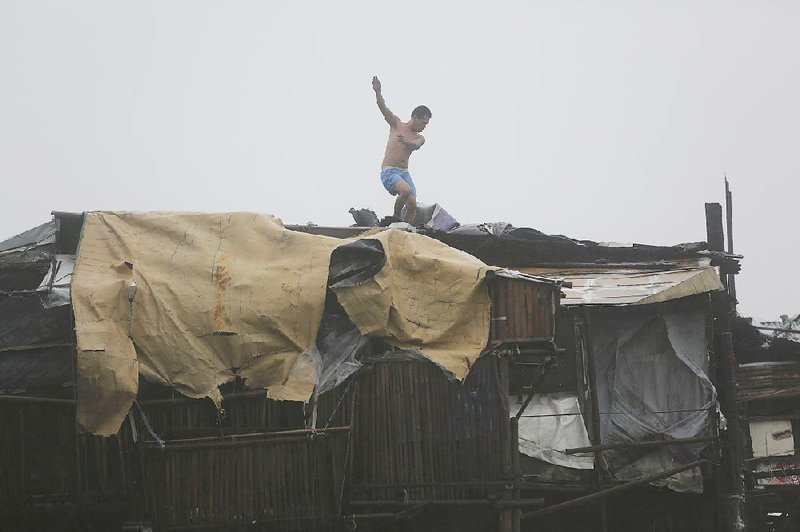MANILA, Philippines -- Slow-moving Typhoon Koppu weakened after blowing ashore with fierce winds in the northeastern Philippines on Sunday, leaving at least two people dead, displacing 16,000 villagers and knocking out power in entire provinces, officials said.
Army troops and police were deployed to rescue residents trapped in flooded villages in the hard-hit provinces of Aurora, where the typhoon made landfall early Sunday, and Nueva Ecija, a nearby rice-growing province where floodwaters swamped rice farmlands at harvest time.
After slamming into Aurora's Casiguran town after midnight Saturday, the typhoon weakened and slowed down, hemmed in by the Sierra Madre mountain range and a high pressure area in the country's north and another typhoon far out in the Pacific in the east, government forecaster Gladys Saludes said.
Winds knocked down trees and electric posts, leaving nine provinces without power, while floods and small landslides made 25 roads and bridges impassable. Authorities suspended dozens of flights and sea voyages due to the stormy weather, and many cities canceled classes today.
Late Sunday night, the typhoon was blowing over the northern mountainous province of Ifugao and was continuing to weaken.
It had sustained winds of 80 mph and gusts of up to 100 mph and was blowing northward at just 3 mph, according to the government's weather agency.
It's expected to weaken to a tropical storm by late today and exit the main northern island of Luzon on Wednesday.
While weather conditions had begun to improve in some towns, and villagers had started to clear roads of fallen trees and debris, Koppu still packed a ferocity that could set off landslides and flash floods, officials said.
"We're asking our countrymen not to become complacent," said Alexander Pama, who heads the government's disaster-response agency, citing how rainwater could cascade down mountainsides after Koppu passed and flood villages.
That happened in low-lying villages in six towns in Nueva Ecija, near Aurora, where some residents were trapped on rooftops by floodwaters, said Nigel Lontoc of the Office of Civil Defense.
A teenager was killed Sunday by a fallen tree, which also injured four people and damaged three houses in Quezon City, a suburb of Manila.
In the town of Subic, northwest of Manila, a concrete wall collapsed and killed a 62-year-old woman and injured her husband, Lontoc said.
Three fishermen were rescued at sea off northern Bataan province, and three other missing people were found in an evacuation camp in Aurora's Baler town, he said.
President Benigno Aquino III and disaster-response agencies had warned that Koppu's rain and winds may bring more damage with its slow speed. But Saludes, the government forecaster, said that there was less rain than expected in some areas, including in Manila, but that fierce winds lashed many regions.
Koppu, Japanese for "cup," is the 12th storm to hit the Philippines this year. An average of 20 storms and typhoons each year batter the archipelago, one of the world's most disaster-prone countries.
In 2013, Typhoon Haiyan, one of the most ferocious storms on record to hit land, barreled through the central Philippines, leveling entire towns and leaving more than 7,300 people dead or missing.
Information for this article was contributed by Oliver Teves of The Associated Press.
A Section on 10/19/2015
